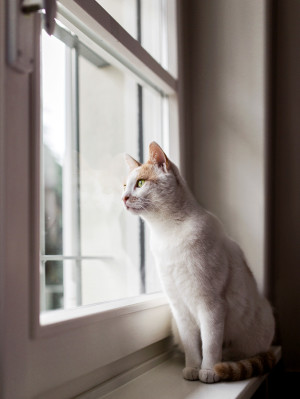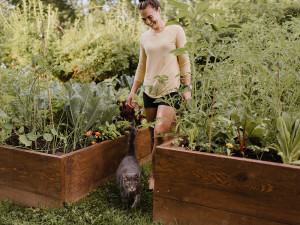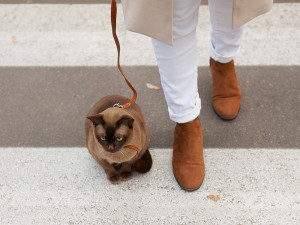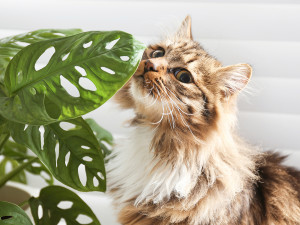Are Cats the Most Toxic Pets on the Planet?
Maybe so—but not toxic like your ex-best friend is toxic.
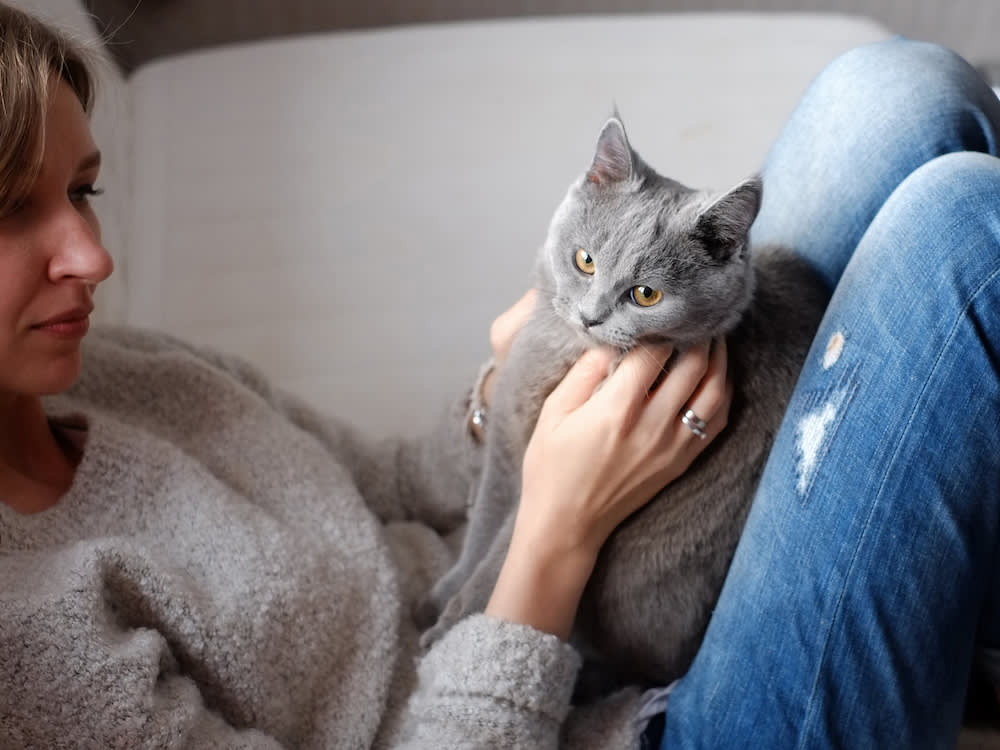
Share Article
One weekend morning not long ago, I committed the grave sin of sleeping an hour (OK, maybe two) past my three cats’ usual breakfast time. I woke to a crash and sat up to find my oldest cat child, Freddy, sitting next to a shattered vase, a pool of water, and the flowers I’d brought home for my bedside table earlier that week. (Like Miley Cyrus, I buy them for myself.) She was casually licking her paw, calm and unrepentant. When I cried out, “Freddy, what did you do?” she stopped and glared up at me, as if to say, Breakfast is late, b****. What did you expect?
That’s just one example of the shenanigans that go on around here on the regular. So, when I saw an Instagram reelopens in new tab claiming that cats are the most toxic pets on the planet, I immediately thought, Yes, that tracks. Turns out, however, that they’re not talking about toxic behaviors, such as sitting on my phone so I can’t find it, biting my ankles when I don’t open the canned food fast enough, and jumping on my head in the middle of the night for no discernible reason. No — the reel highlights study findings that show cats carry a concerning load of literally toxic chemicals.

Save on the litter with color-changing tech that helps you better care for your cat.
According to the video, cats who live indoors “without access to fresh air” absorb every chemical we use inside, from things like cleaning products and fragrances, and their livers can’t clear all those toxins. Seeing this, I was suddenly far less upset about my broken vase (though it was my favorite) and much more worried for my cats, who for all their naughtiness, are the loves of my life. What would I do without their sweet cuddles and gentle paw taps when they want me to pet them?
Let’s break down the science here.
I reached out to veterinarian Dr. Julie Huntopens in new tab, a consultant for Embrace Pet Insurance,opens in new tab to get her take on the video and find out if there’s anything I can do to make my babies a little less toxic. Right away, she pointed me toward the research she suspected the video was referencing: A study by the Environmental Working Group opens in new tab(EWG) that analyzed blood and urine samples from cats and dogs. The study found that cats had 46 chemicals coursing through their little bodies. These included nine known carcinogens, 34 neurotoxins, and 15 chemicals toxic to their endocrine, or hormonal, systems.
How much do you spend on your pet per year?

“This study is the most comprehensive investigation of the chemical body burden of companion animals conducted to date, with 23 chemicals reported in pets for the first time,” the EWG writes. “The results reinforce findings from prior studies showing that pets’ unique behaviors may place them at risk for elevated exposures and health risks from chemicals pollutants in the home and outdoors, in air, water, food, soil, and consumer products for people and pets.”
Hunt says that though that sounds alarming, some of those 46 chemicals are probably not concentrated enough to have any effect on cats’ health. As for the Instagram reel, she took issue with several of its takeaways. “While the general admonition to avoid chemicals is reasonable, numerous statements in the video are not supported by the EWG study,” she says. She rebuts them here, point by point:
Cats are the most toxic pets on the planet. “The study only tested dogs, cats, and humans — not any other pets, some of which may have tested higher than cats.”
Cats had 23 times the contaminants of humans and twice that of dogs. “Does this mean the level of contaminants (concentration) or the number? The study found that for some chemicals, cats had higher levels than dogs and humans, but for many others, their levels were lower.”
Cats absorb and ingest every chemical we use inside. “There are some chemicals that they likely do not absorb.”
Cats’ livers aren’t able to flush out all the chemicals in our homes. ”While some chemicals are cleared by the liver, as stated in the video, some are not. Some are either not able to be cleared at all, or are cleared via the urinary tract.”
Don’t freak out, but do these things to keep your cat safe.
This doesn’t mean we don’t need to be concerned about our cats’ toxic loads, however. Hunt confirms that because cats live close to the floor, where dust settles, and they groom themselves by licking their fur, their exposure to toxins in the home may be increased.
“This may explain why more toxins (marginally) were found in cats than in dogs,” she says. Here’s what she says we can do to help keep our cats as non-toxic as possible:
Just say no to Teflon and other non-stick coatings. “This is helpful for human health as well,” Hunt says. “Much research indicates that the perfluorochemicals (PFCs) in Teflon persist in the environment — potentially forever.”
Avoid products treated with fire retardants. Hunt says that this one, too, is potentially helpful to humans. “These chemicals (polybrominated diphenyl ethers, or PBDEs) are present in kids’ products treated with flame retardants, electronics, mattresses, and home furniture. Limiting these products in the home will decrease exposure.”
Watch your cleaning habits. You can lessen your cat’s exposure to toxins by being mindful about the way you clean, Hunt says. She recommends vacuuming rather than sweeping, which tends to spread chemicals around. If you do sweep, she says to wet mop afterward. “Dust well, and open your windows, particularly when vacuuming or sweeping.”
Limit heavy metals in your cat’s diet. Mercury is concentrated in large fish that eat other fish, Hunt says. “High mercury levels are particularly found in tuna, mackerel, and swordfish. Consider limiting these types of fish in your cat’s diet.”
Avoid plastics in your home. It’s difficult to live a plastic-free life, but Hunt suggests forgoing plastic cat dishes, toys, and flea and tick products, at minimum. “Use stainless-steel or ceramic bowls,” she says. “If using topical flea and tick products, use only those recommended by your veterinarian, and apply them on the back of your cat’s neck, where they cannot groom the product off. Consider switching to oral flea and tick products if this is an area of concern for you.”
I’m relieved to report that I already do all of these things — but I’ll be even more careful going forward. I want my cats to be ornery for as long as possible. I just might put my vase of flowers in a safer spot next time I decide to sleep in.
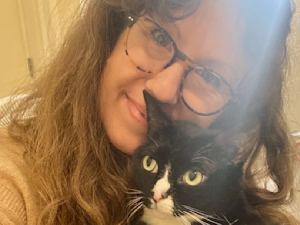
Elizabeth Laura Nelson
Elizabeth Laura Nelson is a writer and editor based in Brooklyn, New York, whose work has appeared in The New York Times, Jenny, Best Life, YourTango, Elite Daily, and more. She focuses her work on relationships, health and wellness, midlife, and lifestyle. As a child, Elizabeth was scared of cats (claws and teeth, yikes) but she has since gotten over her fear and now shares her home with three sweet and gentle feline companions who make life better (and cuddlier) every day.
Related articles
![Cat walking outside on the grass]()
Heartworm in Cats: Do They Get The Disease and What to Know
Dogs are the natural target for these worms, but that doesn’t mean your cat isn’t at risk.
![Woman in a white sweater hugging her cat next to a window]()
Is Your Cat SAD?
Four ways cats can combat seasonal depression.
![A Burma breed cat on a leashed harness sitting near a feet of a girl at a pedestrian crossing.]()
How to Walk Your Cat on a Leash
Adventure Cats author Laura Moss’s step-by-step guide for hitting the streets with your cat.
![cat sniffing a plant]()
Household Plants That Are Toxic to Cats
These plants might be beautiful, but they’re deadly to feline foragers.
![Cat asking for human food from counter]()
What Can Cats Eat Besides Cat Food?
Good news for your begging cat: Some of your favorite snacks are safe to share.
![Cat eating out of metal bowl]()
Top 10 Foods That Are Toxic to Cats
Sharing isn’t always caring. Keep your cat safe by keeping these human snack staples to yourself.
